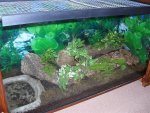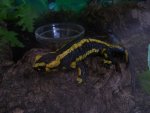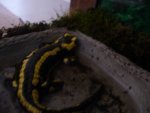peter81965
New member
- Joined
- May 20, 2007
- Messages
- 98
- Reaction score
- 5
- Points
- 0
- Location
- Carmarthen, Wales, Great Britain
- Country
- United Kingdom
I have recently acquired a fire salamander. It looks pretty healthy and my set up meets the reccomendations on the various caresheets that i've read. I'm now going through the new animal anxiety phase. there are earthworms and woodlice in the spacious naturalistic environment and of course I have no way of telling if it has eaten any of these! When I offer it earthworms with a tweezers it refuses. It also seems to be quite inactive, rarely venturing far from its bark hide. Is this normal, and will it become more adventurous as it settles into its new home?



